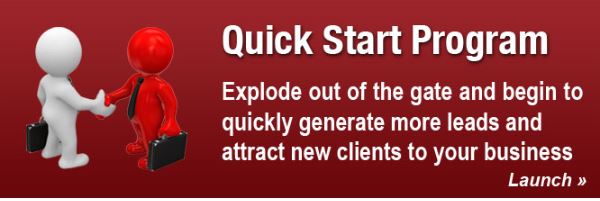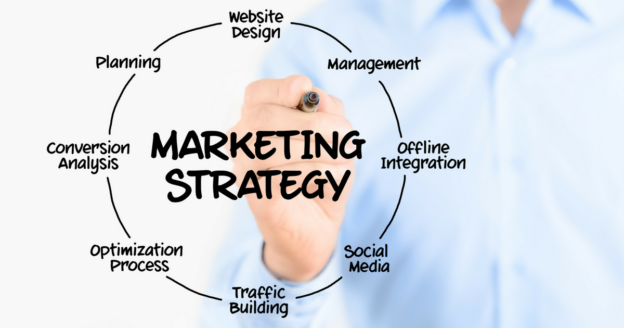When trying to re-establish relationships with past customers, some customers will be comfortable and feel as if they just conducted business with you yesterday while others will wonder why you went to the trouble of contacting them.
Who is a reactivation candidate? To reactivate customers, you need to be attentive to the process. First, to determine which previous customers to reactivate, define what reactivation specifically means for your organization. Most companies define reactivation candidates based on their lack of response to previous marketing efforts. The typical sequential marketing efforts that an organization may follow begin with acquisition, then proceed to resell / upsell / cross-sell / downsell, retention / competitive defense / selective attrition and then reactivation.
How do you differentiate between customers who require selling and retention efforts from those who require reactivation efforts? First, and most obviously, if you know that you’ve lost your customer’s business, then you’ve probably exhausted your sales and retention efforts and can assign the customer to your reactivation group.
If you don’t know whether you have lost your customer’s business, make inquiries. If you find that it’s too expensive to keep in touch with customers, then analyze their buying history (e.g., length of time since last purchase, number of prior purchases, length of time between purchases and average order size) or apply industry averages to determine who might be a reactivation candidate.
Whom do you select for reactivation? Before designating customers as reactivation candidates, determine whether you have their correct contact information. Exclude past customers who have outdated information that cannot be updated through third-party sources.
Also, review any customer service or third-party data you have on reactivation candidates and categorize the reasons for lost business as “controllable” (e.g., shipped wrong product two weeks after promised delivery date) or “uncontrollable” (e.g., moved from retail area). If you’re to blame for the failed relationship, determine whether there is value in re-establishing it.
Once you select your reactivation candidates, segment this group and test offers before spending money to reach them all at once. If possible, use lifetime value to determine which segments may yield a higher return.
When do you conduct reactivation marketing? Reactivation is not a one-time event for when times are tough. Reactivation should be an on-going activity prioritized among other marketing efforts.
Once you have customers who meet your reactivation requirements, execute a reactivation campaign. (See “Reactivation Letters” in the Sales Letter Library). With response history, you can develop a reactivation response model to determine the optimal timing and frequency of your reactivation efforts. For example, a model developed for a health products cataloger might show that the company maximizes its marketing dollars when it tries to reactivate past customers with a buy-one-get-one-free offer after these customers fail to respond to three months of discount offers following their initial purchase.
When you accumulate significant response history from your reactivation marketing efforts, build a model based on RFM analysis (recency, frequency, monetary) or data attributes that predict purchase propensity. A life insurance company might build a model based on age, number of children, marital status, income and interest rates to determine the likelihood of a previous term insurance customer buying a variable life policy.
What do you say to customers you want to reactivate? People change over time and so does your business, so when you’re thinking about marketing to past customers, consider that your customers’ needs and preferences, as well as your business focus, may have changed.
Profile customer’s to create more personalized communications for each segment. Use past data such as RFM information and, if possible, append reliable third-party information that will enhance your customer understanding. For example, you might use third-party information to determine each customer’s age, family situation and income. Then you could send targeted communications to various segments depending on these data attributes as well as results from an RFM analysis.
In conjunction with customer profiling, make an in-depth determination as to why the relationship ended in the first place. Was it something you did? If so, you might have a manager or high-level executive make a personal call to “high-value” customers.
When communicating with reactivation candidates, use the information you have about them in your marketing communications to show your desire to have them back as a customer. Also, if your communication is asking the reactivation candidate to call a person at your company, create a group of call specialists trained to handle reactivation customers.
Investing in acquisition vs. reactivation. Acquisition and reactivation are both investments designed to yield profitable customer relationships. When deciding how much of your marketing budget should be allocated to each effort, calculate the ROI on reactivating old customers versus acquiring new customers.
Whether reactivation involves less of an investment than acquisition depends on the extent of your data analysis, data enhancement and list rental costs. It’s generally true that with customer data available for analysis as well as past customers’ familiarity with a company’s name and product or service quality, reactivation efforts yield higher response rates and higher profitability than acquisition efforts do.
Make the first move. Most organizations focus on acquisition, sales to current customers and retention. They see little opportunity in marketing to people who failed to respond to their offers. These organizations, however, are typically not customer-focused.
Instead of trying to understand why a prior customer is no longer responding, they assume that the customer is the problem in the relationship. The dynamics are similar to that of a person who refuses to talk to another person unless the other person reaches out first. Start looking at your past customers and commit to reaching out and re-establishing a relationship that is valuable to both sides.
8 Steps to Designing a Reactivation Campaign
One of our clients just launched a fairly large reactivation campaign. While there are many ways to run a reactivation campaign, the following steps will set you on a straight path should you decide to launch one.
- Who is your target? Are these people who stopped buying from you six months ago? Three months? Twelve months? If you run a subscription service, are they people who canceled one month ago? Two weeks ago? Two years ago? Decide first who you want to try and reactivate. If someone bought from you four years ago and you’re just now getting around to sending them an e-mail, it’s probably too late. It’s OK to run a few different variations of the campaign if you want to target several different groups from above.
- What’s your goal? I’ll take a wild stab and say your goal is to either have these consumers buy from you again, re-subscribe to your services, or otherwise reengage with your company. But, are there more specific goals than that? Maybe you want to introduce a new product line, introduce a new account manager, or upsell them on something they already own (or a service they already use)?
- Why did these consumers leave? Unlike a normal marketing campaign, you need to understand why your consumers left. Did they not like your products? Were you too expensive? Did you not have enough content in their particular field to keep them interested? Knowing the reasons they probably left will enable you to craft a message that addresses those issues specifically.
- What segmentation or persona data do you have? If you can segment these consumers either by persona or by purchase habits, you can make your reactivation campaign that much more effective. The rules here are the same as for any direct marketing: don’t just send a mass “We want you back” e-mail. Instead, use whatever knowledge you have of the consumer in order to create a more relevant message.
- Split test offers. It’s fine to offer a reactivation discount code to these consumers. They were effectively “dead” anyhow, so you aren’t really losing a full-price purchase by offering them a discount. However, showing consumers that you understand them and have new offerings that meet their needs might just be enough. So, do a split test and create discounts for some percentage of the group, but not all of them. See how they do when compared to the group with no offer.
- Focus on your content. Instead of just saying, “We want you back, here’s 15% off,” make a real effort. Show your consumers you understand them. If they used to buy video games, talk about all the new things that have happened in video games since they last checked your site out. If you run a content subscription-based site (like E-Learning), highlight the new content you’ve added to your site since they were last members. Put the relevant content first. Consumers can get a discount anywhere if they try. It’s your content and products (if they’re relevant) that will be more interesting to them.
- Make it easy for them to come back. If it has been a while, there’s a good chance your consumers don’t remember their usernames or passwords. Either send them this information (or at least their username) in the e-mail, or make it really easy for them to find it. If their account has “expired,” make it easy for them to renew without reentering all their information again. If you offered a discount code, make it very clear where they enter it.
- Reach out via different channels. Are these consumers on Twitter (and do they follow you)? If so, send them a direct message, not an e-mail. E-mail marketing is great, but try other channels if you have access to them.
Finally, realize the difference between a reactivation campaign and a regular campaign. While the above steps could be the recipe for any old marketing campaign, there is one important difference. Reactivation marketing needs to understand how long people have been gone, why they possibly left, what is different in your offerings now that would make them come back, and what (if any) incentive they might need to come back.
If you can’t answer, “What is different in our offerings that would make them come back,” then skip the reactivation campaign and focus on answering that question!
I’ve got a very cool process where I can find any business owner $10,000-$100,000 in lost revenue in 45 minutes or less. I can also show that business owner how to reclaim that lost revenue without spending an additional dime on marketing or advertising. If you want me to find you a minimum of $10,000.00, Click here.










